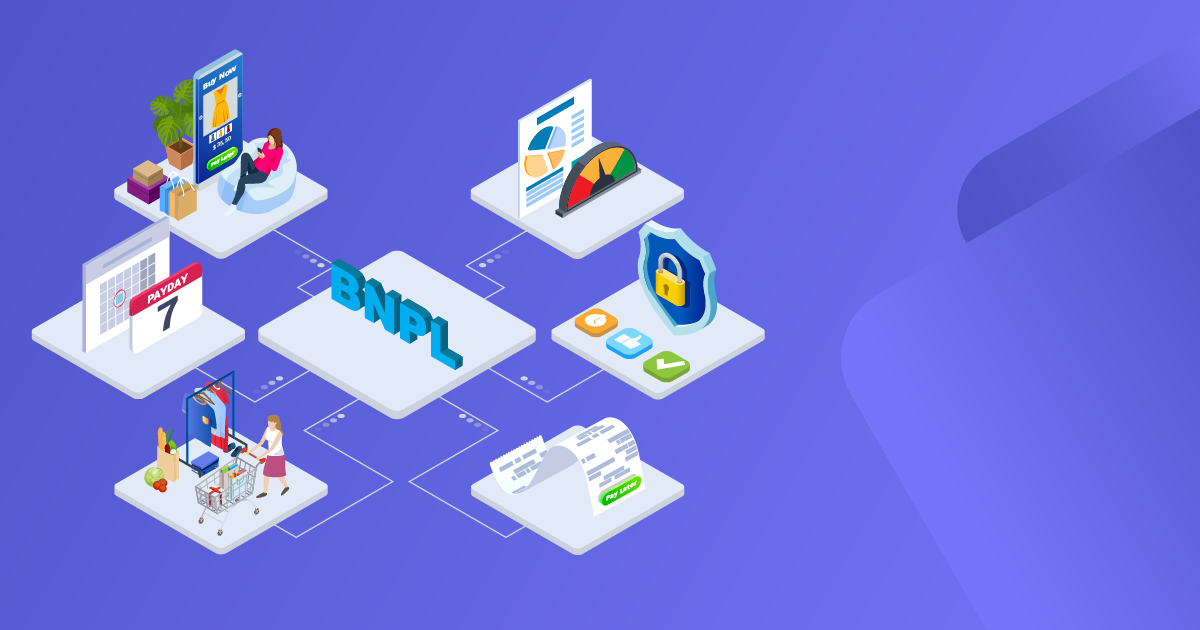

Latin American countries, known for their emerging economies, face a unique financial landscape characterized by limited access to traditional financial services, consumer goods, and a substantial population of unbanked and underbanked citizens. To bridge this gap, the concept of paying for purchases in installments holds significant appeal. It will empower customers to access products and services that might otherwise remain financially out of reach. The Buy Now, Pay Later (BNPL) model is at the lead of this financial evolution, offering a promising path to prosperity.
The Financial Game Changer of Today
BNPL is a groundbreaking financial solution that transforms the way customers approach their purchases. Unlike conventional credit cards, BNPL providers allow buyers to purchase items without having to make an instant payment. What sets BNPL apart is the absence of interest charges, as transactions follow a predetermined repayment schedule. This approach offers consumers a flexible and interest-free way to make purchases, a marked contrast to traditional credit cards.
The Driving Factors of BNPL
The concept of buying now and paying later isn't new; it dates back to the 19th century with methods like payment books and credit card installments. However, what sets apart today’s BNPL solution is its integration with artificial intelligence and data analytics tools. This modernized implementation of BNPL entrusts merchants rather than traditional financial institutions resulting in the reduction of approval processes to mere seconds. Moreover, BNPL doesn't necessitate a credit card or even a bank account, opening doors for unbanked customers, thus increasing financial inclusion.
The Global Influence of BNPL
As we navigate the realm of BNPL, it is crucial to grasp the global context. With significant global expansion, this innovative payment method is poised for remarkable growth. It is anticipated that BNPL payments will constitute nearly a quarter of all global e-commerce transactions by 2026, a substantial increase from the 9% recorded in 2021 [1]. However, the situation in Latin America has been somewhat different, with BNPL representing just 1% of total e-commerce in 2021 with an expected increase to 3% by 2025 [2].
The Latin American Economic Landscape
Purchasing in deferred installments is significantly more common in Latin America compared to regions like the United States and Europe. Emerging economies, inequality, and limited access to financial services create a landscape where installment payments serve as a vital means for customers to access otherwise unreachable goods and services.
Credit card installment payments are popular, but they are unavailable to a significant portion of the population. Whether due to low credit limits or the lack of a bank account. Approximately 178 million people in Latin America were considered unbanked in 2021[1]. This is where BNPL steps in, offering an attractive alternative for those who wouldn't have access to traditional installment options. Nevertheless, adoption in the region has been relatively slow, primarily due to outdated payment regulations.
-
Understanding Regional Payment Habits
It's vital to recognize that while worldwide payment trends exist, every country exhibits unique consumer behavior. Latin America's payment landscape is incredibly nuanced. For example, in Colombia, the most common e-commerce payment method is bank transfers, accounting for 40% of total transactions, significantly higher than the regional average of 13%. It’s evident that Latin American consumers, amounting over 256 million online buyers, have their own preferences and expectations when it comes to payment methods [2]. -
Brazil: A BNPL Leader
In Latin America, Brazil stands out as a shining example of BNPL's potential. With 69% of its citizens lacking a credit card, Brazil has seen BNPL's representation in online sales rise from 1.5% in 2021 to an expected 3.8% by 2025 [2]. The advantages of BNPL, such as increased purchasing power and higher conversion rates, underline its immense potential in the Brazilian market. - The Role of Collaboration
Collaboration has proven to be a successful strategy in the Latin American BNPL market. In markets as vast as this, there's room for cooperation rather than competition. For instance, Mexico-based online lending platforms such as Kueski and Nelo have embraced collaboration, driving consumer adoption and sustainable growth in the BNPL sector. Cooperation between different BNPL providers ensures better service and accessibility for consumers while expanding the market for providers. - The Societal Impact
BNPL in Latin America has broader societal implications. On one hand, it democratizes access to high-value goods, especially for the unbanked. On the other hand, there's a risk of over-indebtedness, particularly among younger customers who might be enticed by the appeal of easy payments without fully understanding the long-term financial implications. A balanced approach, promoting financial literacy and responsible spending, is key in ensuring that BNPL benefits society as a whole. - The Road Ahead
As BNPL continues its journey in Latin America, the region must find the right balance between innovation and prudence. This nuanced path will be important in guaranteeing that BNPL becomes a blessing rather than a curse for the region. Latin America is standing on the edge of a financial transformation, and the choices made today will shape the future of its economies.
Conclusion
Latin America's BNPL journey is still in its initial stages, but it holds immense potential for both customers and merchants. By recognizing and embracing the region's unique distinctions, foreign and local providers can pave the way for financial inclusion, accessibility, and prosperity in the forthcoming years. As BNPL evolves in Latin America, it's imperative that we navigate this financial landscape with caution, ensuring it truly serves as a financial game changer.
References:
- Ibarra, F. Why Homegrown Latin American BNPL Providers Are Ahead in Underserved Markets. Payments Journal. 2023.
- Constantinescu, R. Buy Now, Pay Later: how is the major trend faring in Latin America? Voice of the Industry. 2022.






